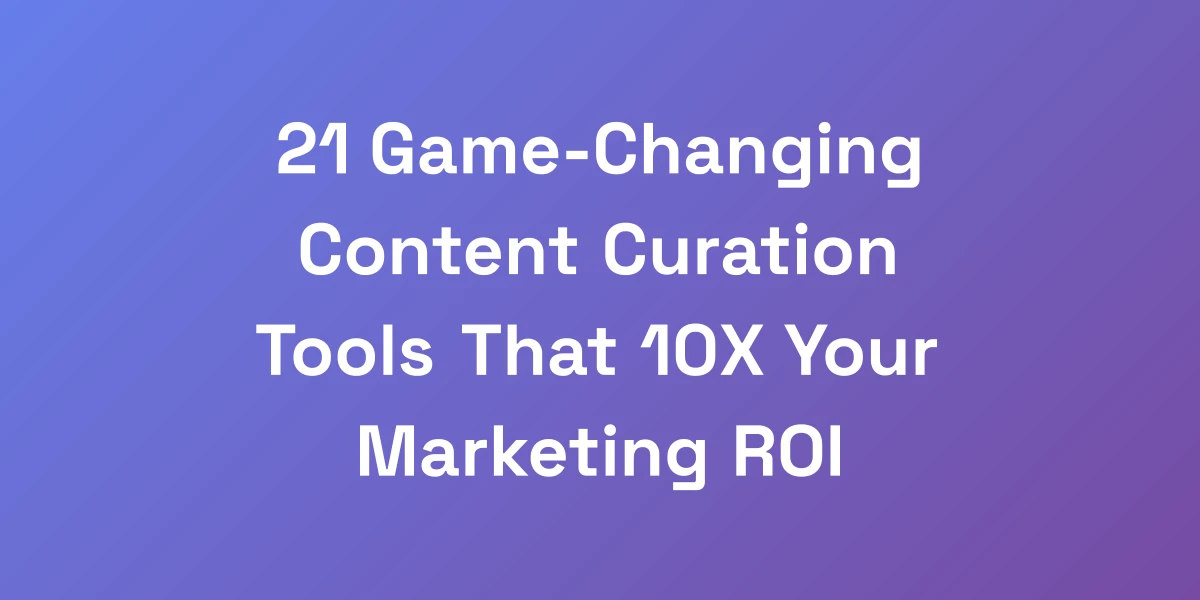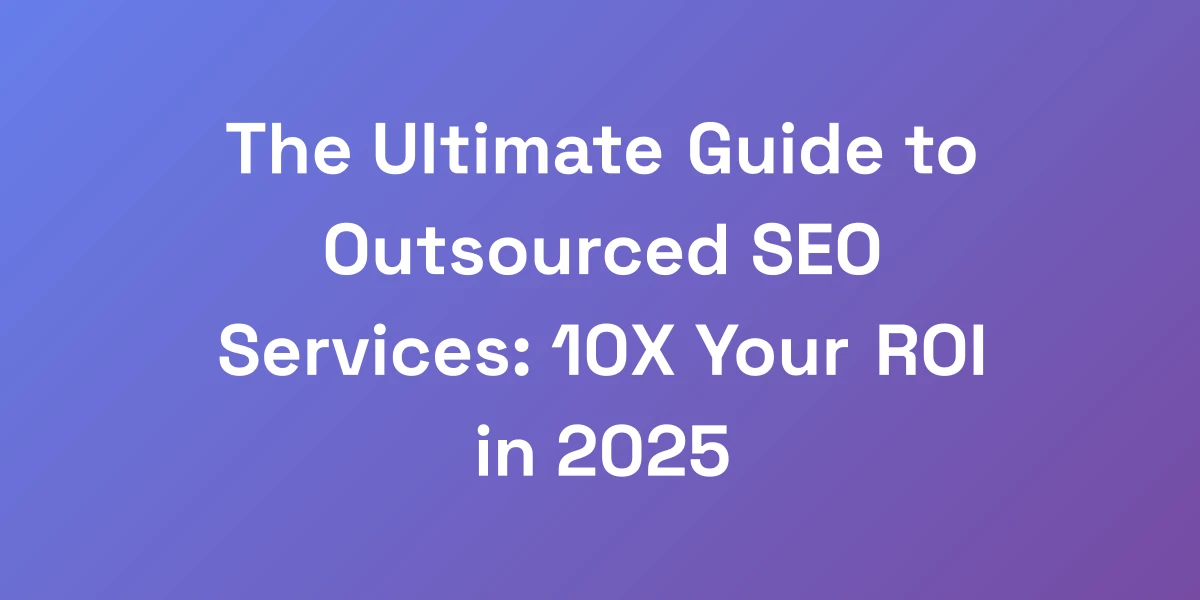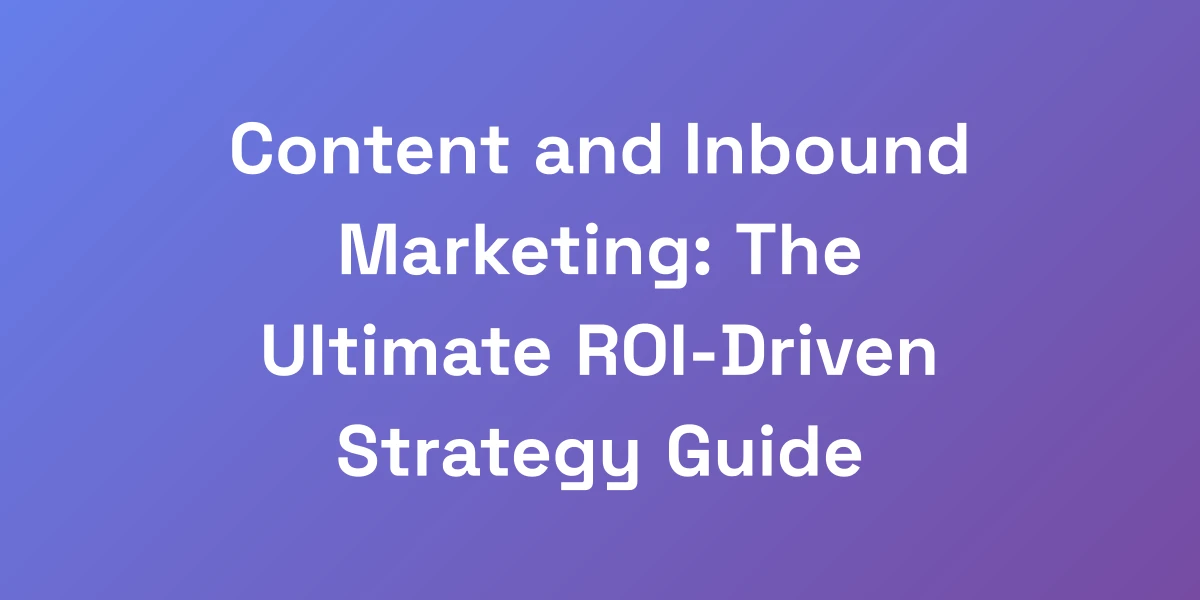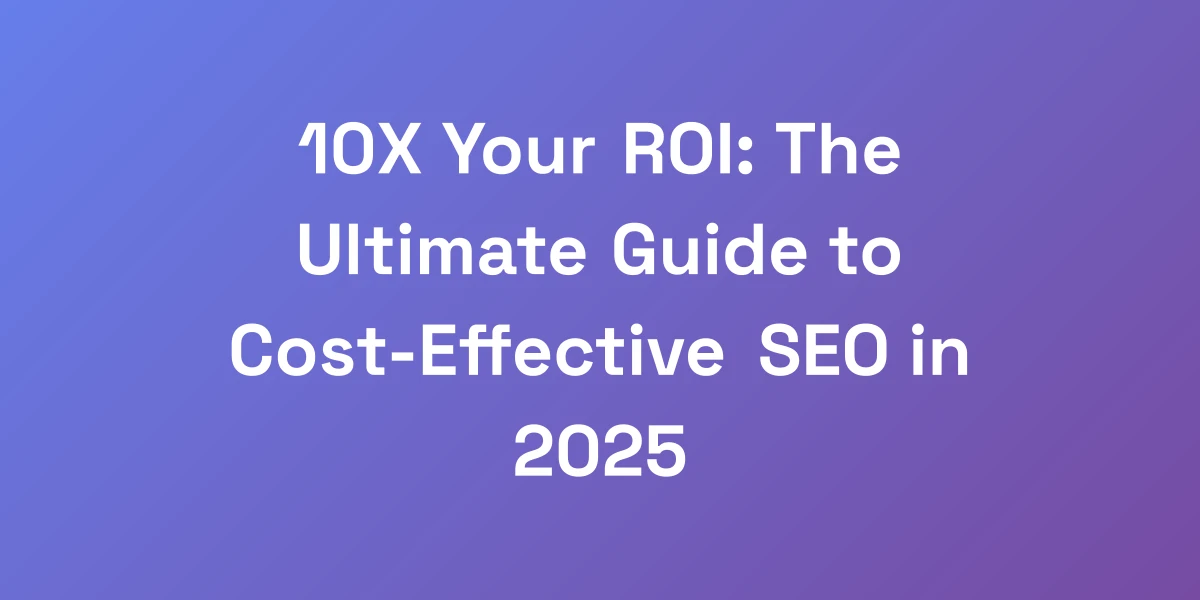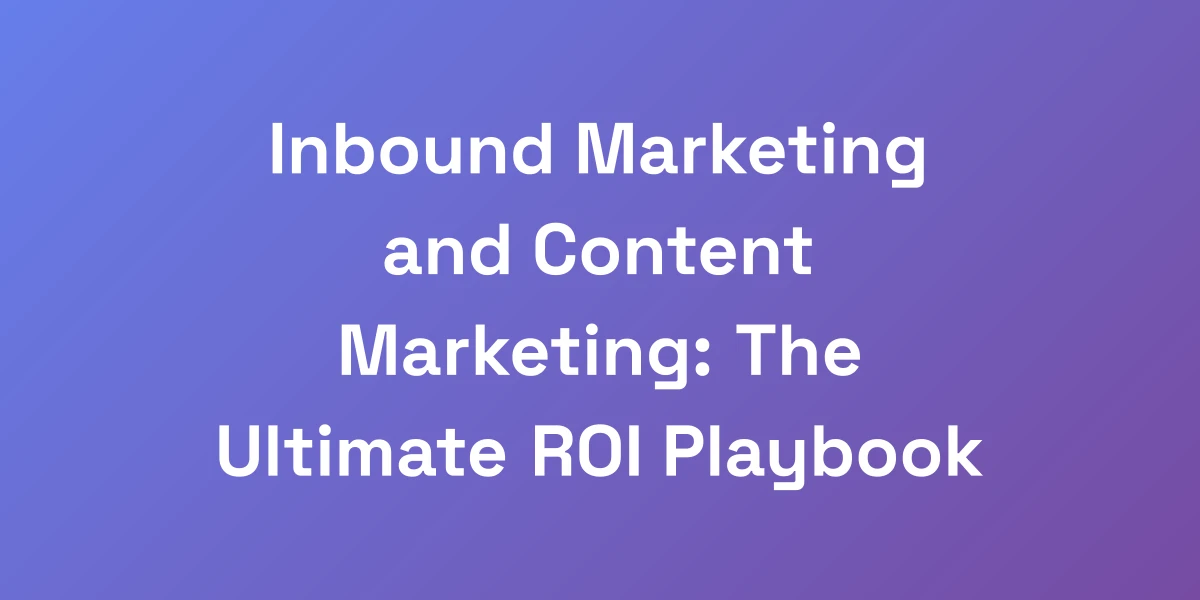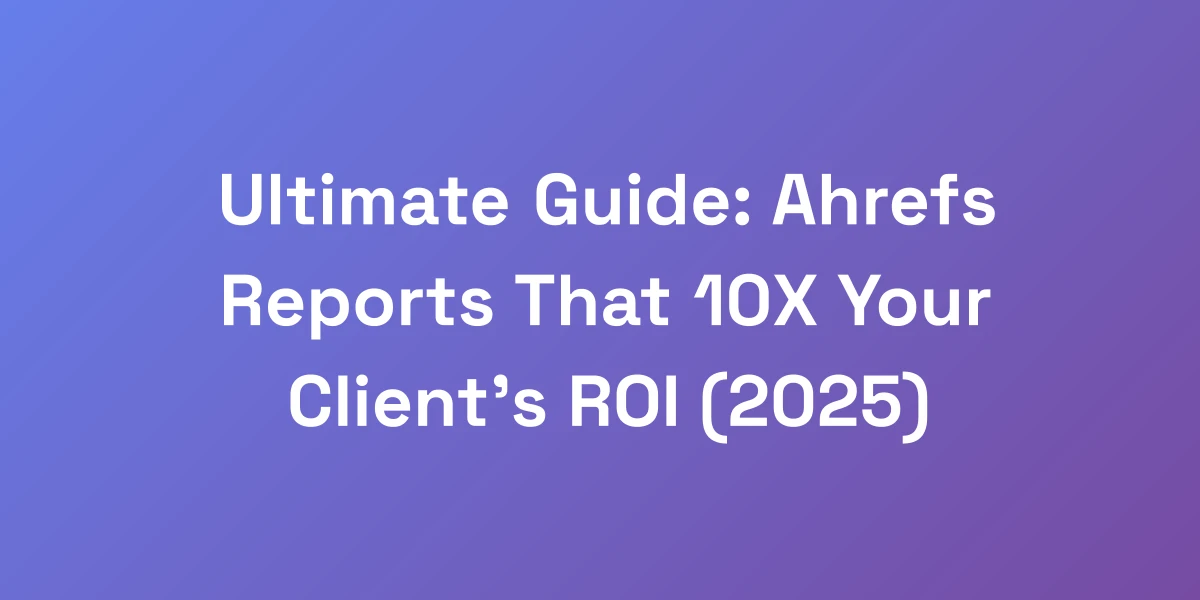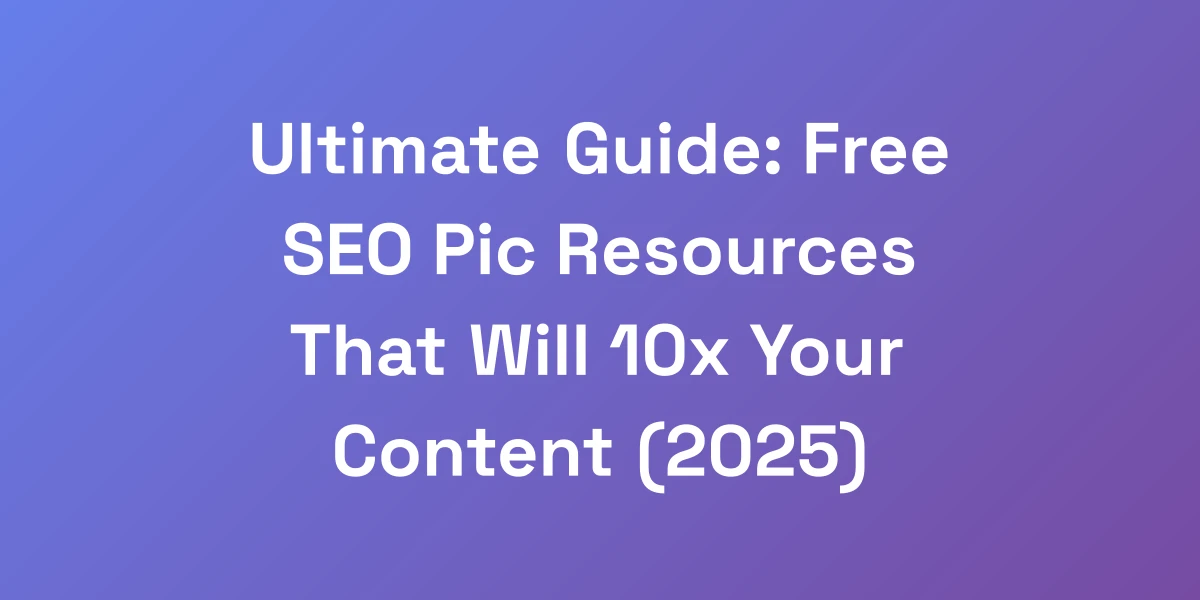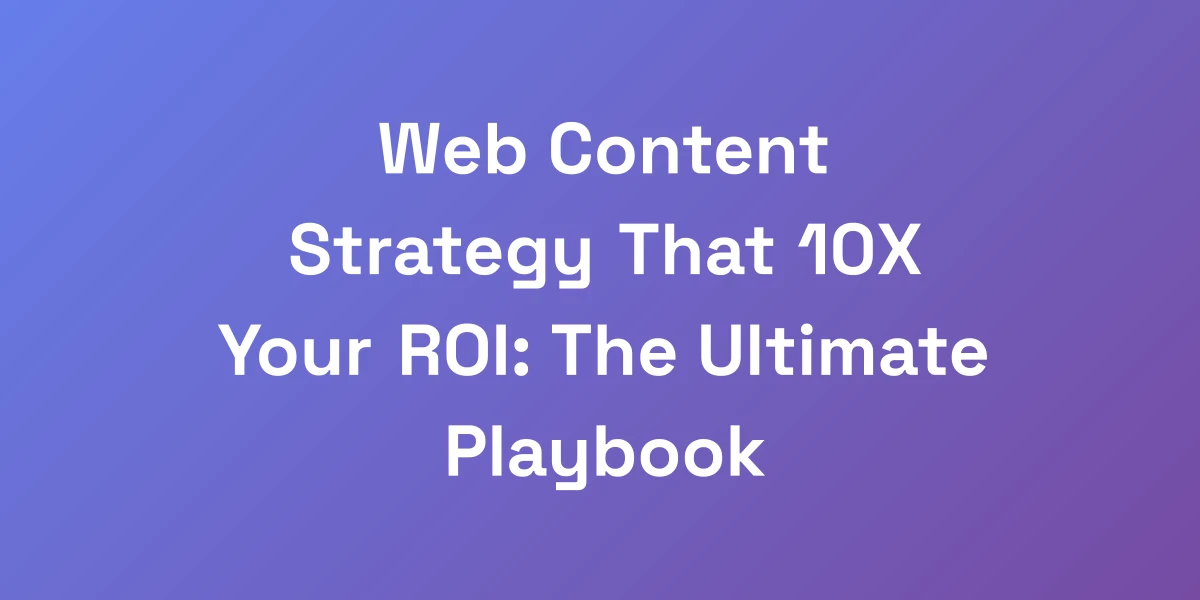
Web Content Strategy That 10X Your ROI: The Ultimate Playbook
Mar 15, 2025 | By [email protected]
Introduction
Ever feel like your web content is spinning its wheels, going nowhere despite all the effort and resources you pour into it?
We’ve been there. Crafting a content strategy that actually delivers is tougher than it seems. The harsh truth? 90% of web content strategies fail because they’re overcomplicated and lack a clear direction.
Imagine investing thousands into creating slick blog posts and eye-catching graphics, only to watch your ROI stagnate. Frustrating, right?
But here’s the kicker: your content strategy doesn’t need to be rocket science. It’s about building a predictable system that converts visitors into customers. In this playbook, we’ll break down the steps to create a web content strategy that doesn’t just look good but 10X your ROI.
Ready to transform your content from a cost center to a revenue powerhouse? Let’s get into it.
Why Most Web Content Strategies Fail (And How to Win Instead)
Let me hit you with some truth: 90% of web content strategies fail because people overcomplicate what should be dead simple. I’ve seen businesses burn through thousands of dollars creating content that looks good but delivers zero ROI.
Here’s the reality – your web content strategy isn’t about fancy words or pretty graphics. It’s about creating a predictable system that converts visitors into customers. In this guide, we’re going to show you exactly how to build a content strategy that actually makes you money, not just vanity metrics.
The Hidden Cost of Poor Content Strategy
Think about every blog post, whitepaper, or video that fails to engage or convert. The hidden costs extend beyond just the monetary investment; they drain your team’s morale and distract from initiatives that could drive real growth.
For instance, one financial services company invested heavily in content that didn’t resonate with their audience, resulting in wasted resources and missed revenue opportunities.
- Lost Opportunities: Every piece of ineffective content is a missed chance to convert a visitor into a customer.
- Brand Damage: Poorly executed content can tarnish your brand’s reputation, making it harder to build trust.
- Resource Drain: Time, money, and effort spent on low-performing content could be better allocated elsewhere.
Understanding these hidden costs is the first step in avoiding the common pitfalls that lead to content strategy failure.
The ROI-First Approach to Content
We believe that content should be built with ROI as the cornerstone. This means every piece of content needs to have a clear purpose and measurable impact on your bottom line.
Here’s how you can adopt an ROI-first approach:
- Set Clear Objectives: Define what success looks like for each piece of content. Is it lead generation, brand awareness, or direct sales?
- Align with Business Goals: Ensure your content supports your overarching business objectives. Every article, video, or infographic should contribute to your growth targets.
- Measure and Optimize: Continuously track the performance of your content and tweak your strategy based on what’s working and what’s not.
By focusing on ROI from the outset, you shift your mindset from creating content for the sake of it to creating content that drives tangible business results.
Common Mistakes That Kill Content Performance
We’ve seen it all: businesses making the same mistakes time and time again. Let’s spotlight the most common ones:
- Lack of Strategy: Ad-hoc content creation without a clear strategy leads to inconsistent messaging and wasted resources.
- Ignoring SEO: Without proper SEO, your great content won’t reach its intended audience. It’s like throwing a party and forgetting to invite guests.
- Overlooking Quality: Quantity over quality is a recipe for disaster. Low-quality content no one wants to read or share.
- Neglecting Analytics: Not tracking performance means you’re flying blind, unable to refine your strategy based on data.
- Failure to Adapt: The digital landscape evolves rapidly. Sticking to outdated tactics stifles growth and diminishes your ROI.
Avoiding these mistakes sets the foundation for a successful content strategy that can consistently drive ROI.
The New Rules of Content Strategy for 2025
The digital landscape is constantly evolving, and so should your content strategy. Here are the new rules to follow in 2025:
- Embrace AI and Automation: Leverage AI tools like MarketMuse and Clearscope to enhance your content planning and optimization.
- Prioritize User Intent: Create content that directly addresses the needs and questions of your audience.
- Focus on Mobile Optimization: With 35% of media consumption happening on smartphones, ensure your content is mobile-friendly.
- Integrate Multimedia: Use a mix of text, video, and interactive elements to engage different types of learners.
- Adopt a Data-Driven Approach: Use analytics to guide your content decisions and measure success accurately.
By adhering to these new rules, you stay ahead of the curve and ensure your content strategy remains effective in a rapidly changing environment.
Setting Up Your Content Success Metrics
To truly gauge the success of your content strategy, you need the right metrics in place. Here’s how to set them up:
- Identify Key Performance Indicators (KPIs): Focus on metrics that directly impact revenue, like conversion rates, lead generation, and sales attributed to content.
- Create an Analytics Dashboard: Use tools like Matomo Analytics or Google Analytics to track your KPIs in real-time.
- Implement Content ROI Calculation Methods: Calculate ROI using the formula: (Net Profit / Cost of Investment) * 100%. This helps in assessing the financial impact of your content efforts.
- Scale Successful Content Patterns: Once you identify what works, amplify those strategies across your content portfolio.
- Advanced Attribution Modeling: Utilize models that accurately attribute sales and conversions to your content efforts, giving you a clear picture of what drives revenue.
Setting up your success metrics correctly ensures you can measure and optimize your content strategy effectively.
Building Your Content Money Machine
Listen carefully: Your content strategy needs to be a money-printing machine. Period. I’m talking about creating a systematic approach that turns every piece of content into a sales asset.
The old way of just pumping out blog posts hoping something sticks? Dead. Instead, we’re going to build what we call a Content Money Machine – a strategic framework that generates predictable revenue through content. This isn’t theory; this is exactly what we’ve used to generate millions in revenue.
The Content Value Ladder Framework
The Content Value Ladder is all about structuring your content to guide your audience through a journey, from awareness to conversion.
- Top of the Ladder (Awareness): Create broad content that attracts a large audience. Think blog posts, social media updates, and infographics.
- Middle of the Ladder (Consideration): Develop more in-depth content like ebooks, webinars, and case studies that engage and educate your audience.
- Bottom of the Ladder (Conversion): Offer highly targeted content such as detailed product guides, testimonials, and personalized emails that encourage purchases.
By strategically placing content at each stage of the ladder, you create a seamless pathway that nurtures prospects and drives conversions.
Creating Your Content Profit Centers
Not all content is created equal. To maximize ROI, categorize your content into profit centers that directly contribute to revenue generation.
- Lead Generation Content: Content like gated ebooks, whitepapers, and webinars that capture leads.
- Sales Enablement Content: Detailed product pages, case studies, and comparison guides that assist the sales team in closing deals.
- Customer Retention Content: Newsletters, update emails, and exclusive content that keep your customers engaged and loyal.
Each profit center should have a specific purpose and be optimized to drive revenue, ensuring every piece of content serves your financial goals.
Strategic Content Mapping for Maximum ROI
Content mapping involves aligning your content with the buyer’s journey to ensure it meets their needs at each stage.
- Awareness Stage: Use blog posts, social media content, and SEO-optimized articles to attract visitors.
- Consideration Stage: Offer in-depth resources like whitepapers, webinars, and case studies to educate and engage your audience.
- Decision Stage: Provide compelling content such as product demos, customer testimonials, and detailed guides to drive conversions.
By mapping your content to each stage, you create a cohesive journey that leads prospects from initial awareness to final purchase seamlessly.
Content Distribution Channels That Actually Convert
Having great content is only part of the equation. You need to distribute it through the right channels to maximize reach and conversions.
- Social Media Platforms: Leverage platforms like LinkedIn, Facebook, and Instagram to share and promote your content effectively.
- Email Marketing: Use targeted email campaigns to distribute personalized content directly to your audience’s inbox.
- SEO and Organic Search: Optimize your content for search engines to drive organic traffic and enhance visibility.
- Paid Advertising: Invest in PPC campaigns and sponsored content to boost reach and drive targeted traffic.
- Content Syndication: Partner with industry blogs and influencers to amplify your content’s reach.
Selecting the right distribution channels ensures your content reaches the right audience, enhancing engagement and driving higher conversions.
Automation and Scaling Strategies
To truly turn your content into a money machine, you need to scale your efforts efficiently. Automation plays a critical role here.
- Content Management Systems (CMS):strong> Use CMS platforms like WordPress to streamline content creation and publication.
- Marketing Automation Tools: Tools like HubSpot and Marketo can automate email campaigns, social media posts, and lead nurturing.
- AI-Powered Tools: Leverage AI tools such as MarketMuse and Clearscope for automatic SEO optimization and topic research.
- Workflow Automation: Implement systems to automate repetitive tasks, allowing your team to focus on high-impact activities.
- Scalable Content Production: Develop processes that allow you to produce high-quality content consistently without burning out your team.
By incorporating automation into your content strategy, you can scale your efforts efficiently, maintaining quality while increasing output and ROI.
The High-Converting Content Framework
Here’s something nobody tells you: The highest-converting content follows a specific pattern. It’s not about being creative – it’s about being systematic and strategic.
We’re going to show you our exact framework that generates consistent results. This isn’t just about writing well; it’s about creating content that triggers specific buying behaviors. When you understand these patterns, you can literally engineer content that converts.
The Psychology of High-Converting Content
Understanding the psychology behind why people convert is crucial to crafting content that drives action.
- Emotional Triggers: Content that taps into emotions like fear, joy, or surprise is more likely to resonate and prompt action.
- Social Proof: Testimonials, case studies, and user reviews build trust and credibility, essential for conversions.
- Scarcity and Urgency: Limited-time offers and exclusive deals motivate immediate action.
- Authority and Expertise: Demonstrating expertise through in-depth content establishes your authority in the industry, making audiences more likely to convert.
- Clear Value Proposition: Clearly communicating the benefits and value of your offering helps persuade visitors to take the next step.
By leveraging these psychological principles, your content can effectively influence and drive your audience towards conversion.
Content Structures That Drive Action
Not all content structures are created equal. Certain formats are proven to drive more action and conversions.
- Listicles: Easy to read and highly shareable, listicles can effectively present valuable information in a digestible format.
- How-To Guides: Step-by-step guides help establish authority and provide clear value, encouraging readers to follow through with actions.
- Case Studies: Real-life examples demonstrate your product or service in action, showcasing tangible results and building trust.
- Infographics: Visual content like infographics can simplify complex information, making it more engaging and easier to understand.
- Webinars and Videos: Interactive and visually engaging formats like webinars and videos can capture attention and drive higher engagement rates.
Selecting the right content structure for your goals ensures that your content not only engages but also converts effectively.
Writing Frameworks for Different Buying Stages
Your content needs to adapt to the different stages of the buyer’s journey. Here’s how to align your content with each stage:
- Awareness Stage: Focus on educational content that introduces your brand and addresses common pain points. Blog posts, social media updates, and infographics work well here.
- Consideration Stage: Provide detailed information that helps your audience evaluate their options. Whitepapers, ebooks, and webinars are ideal for this stage.
- Decision Stage: Offer persuasive content that drives action. Product demos, case studies, and comparison guides can help seal the deal.
By tailoring your content to each stage of the buyer’s journey, you ensure that your audience receives the right information at the right time, moving them closer to conversion.
Optimization Techniques for Maximum Impact
Cream the cow, if you will – take your content and make it as effective as possible with these optimization techniques:
- SEO Optimization: Incorporate relevant keywords naturally, optimize meta tags, and ensure your content is easily discoverable by search engines.
- Readability: Use clear headings, bullet points, and short paragraphs to make your content easy to read and digest.
- Visual Enhancements: Add images, videos, and infographics to break up text and make your content more engaging.
- Call-to-Actions (CTAs): Strategically place CTAs throughout your content to guide your audience towards the desired action.
- Mobile Optimization: Ensure your content looks great and functions well on mobile devices, given that a significant portion of users consume content on their phones.
These optimization techniques help maximize the effectiveness of your content, ensuring it performs at its highest potential.
Testing and Iteration Protocols
Even the best strategies need refinement. Implementing robust testing and iteration protocols ensures continuous improvement.
- A/B Testing: Test different versions of your content to see which performs better. This can apply to headlines, CTAs, layouts, and more.
- Performance Tracking: Regularly monitor key metrics to assess how your content is performing against your goals using automated SEO reports.
- User Feedback: Gather feedback from your audience to understand what’s working and what isn’t, allowing you to make informed adjustments.
- Iterative Improvements: Use the data and feedback you collect to make continuous, incremental improvements to your content strategy.
By committing to testing and iteration, you ensure your content strategy remains dynamic and responsive to your audience’s needs and behaviors.
Measuring and Scaling Your Content Strategy
Most people get this completely wrong – they focus on vanity metrics like page views and social shares. But here’s the truth: The only metrics that matter are the ones that directly tie to revenue.
We’re going to show you exactly how to track, measure, and scale your content strategy using what we call the Revenue Impact Framework. This is the same system we use to track millions in content-attributed revenue.
Key Performance Indicators That Actually Matter
Focusing on the right KPIs is crucial for measuring the true impact of your content strategy.
- Conversion Rate: The percentage of visitors who take a desired action, such as filling out a form or making a purchase.
- Lead Generation: The number of leads generated through your content efforts, indicating potential revenue streams.
- Sales Attribution: Tracking which pieces of content directly contribute to sales, providing clear insights into what drives revenue.
- Customer Acquisition Cost (CAC):strong> The cost associated with acquiring a new customer through your content marketing efforts.
- Lifetime Value (LTV) of a Customer: The total revenue a customer is expected to generate over their relationship with your business, influenced by your content.
By honing in on these KPIs, you can better understand the financial impact of your content and make informed decisions to enhance your strategy.
Setting Up Your Analytics Dashboard
An effective analytics dashboard is essential for tracking your KPIs and gaining real-time insights into your content performance.
- Choose the Right Tools: Implement tools like Google Analytics, Matomo, or advanced platforms like MarketMuse to track and visualize your data.
- Customize Your Dashboard: Tailor your dashboard to display the metrics that matter most to your ROI, such as conversion rates, lead generation, and sales attribution.
- Automate Reporting: Set up automated reports to receive regular updates on your content performance, allowing you to stay on top of your strategy without manual tracking.
- Integrate Data Sources: Combine data from various sources, including CRM systems and marketing automation tools, for a comprehensive view of your content’s impact.
A well-configured analytics dashboard provides a clear picture of how your content is performing against your financial goals, enabling proactive optimization.
Content ROI Calculation Methods
Calculating the ROI of your content marketing efforts helps justify your investment and guide future strategies.
- Direct ROI: Use the formula: ROI = (Net Profit / Cost of Investment) * 100%. This measures the financial return relative to the cost of your content efforts.
- Lead-Based ROI: Track the number of leads generated and assign a monetary value to each lead. Multiply the number of leads by the average value to determine ROI.
- Revenue Attribution: Use attribution models to assign revenue to specific pieces of content that influenced sales, providing a direct link between content and income.
- Cost Savings: Calculate the savings achieved through content automation and efficiency improvements, contributing to overall ROI.
These methods provide a clear understanding of the financial benefits derived from your content strategy, enabling data-driven decisions to enhance ROI.
Scaling Successful Content Patterns
Once you’ve identified what works, scaling those patterns can exponentially increase your ROI.
- Replicate High-Performing Content: Identify your best-performing content pieces and create similar content to capitalize on their success.
- Expand Content Formats: If certain formats, like videos or infographics, perform well, consider expanding these formats to reach a broader audience.
- Increase Content Output: Scale your content production capabilities to produce more high-quality content consistently.
- Leverage Partnerships: Collaborate with influencers and industry partners to amplify your content reach and tap into new audiences.
- Optimize Distribution Channels: Focus on the channels that drive the most conversions and allocate more resources to them.
By scaling successful patterns, you can amplify your content’s impact and drive even greater ROI.
Advanced Attribution Modeling
Understanding the true value of your content requires advanced attribution modeling.
- Multi-Touch Attribution: Assign credit to multiple touchpoints along the buyer’s journey, providing a more accurate picture of how content influences conversions.
- Algorithmic Attribution: Use machine learning algorithms to analyze vast amounts of data and determine the true impact of each content piece.
- Custom Attribution Models: Develop tailored attribution models that reflect your unique business processes and customer behaviors.
- Cross-Channel Attribution: Track how content interacts across different channels and devices, ensuring you capture the full scope of its impact.
Advanced attribution models offer deeper insights into how your content drives revenue, enabling more precise optimization of your content strategy.
Implementation and Execution Roadmap
Let’s get tactical. You need a clear, actionable plan to execute this strategy. We’re going to give you our exact 90-day implementation roadmap that you can start using today.
This isn’t theoretical – these are the exact steps we use with our clients to generate predictable content ROI. The key is in the systematic execution and constant optimization of your content strategy.
90-Day Implementation Timeline
Breaking down your content strategy into manageable phases ensures a smooth and effective implementation. Here’s how to structure your first 90 days:
- Month 1: Planning and Research
- Conduct a content audit to assess current performance.
- Define your target audience and create detailed buyer personas.
- Set clear, measurable goals aligned with your business objectives.
- Identify key content themes and topics based on audience needs and market trends.
- Month 2: Content Creation and Optimization
- Create a content calendar outlining topics, formats, and publication dates.
- Start producing high-quality content, focusing on SEO and user intent.
- Optimize existing content for better performance and alignment with new strategy.
- Implement tools like MarketMuse and Clearscope to enhance content quality and relevance.
- Month 3: Distribution and Promotion
- Launch your content distribution plan, leveraging preferred channels like social media, email, and SEO.
- Use automation tools to streamline content posting and distribution.
- Monitor initial performance and gather data for analysis.
- Adjust your strategy based on early insights and feedback.
Following this timeline ensures that you build a solid foundation for your content strategy, setting the stage for long-term success and scalability.
Resource Allocation and Team Structure
Effective resource allocation and a well-structured team are critical to executing your content strategy successfully.
- Define Roles and Responsibilities: Assign specific roles such as Content Strategist, Content Creators, Editors, and Analysts to ensure clarity and accountability.
- Allocate Budget Wisely: Distribute your budget across content creation, distribution, tools, and analytics based on your strategic priorities.
- Leverage External Resources: Consider outsourcing or partnering with agencies for specialized tasks like graphic design, video production, or SEO optimization.
- Encourage Collaboration: Foster a collaborative environment where team members can share ideas, provide feedback, and work together towards common goals.
By clearly defining roles and allocating resources effectively, your team can operate efficiently and drive your content strategy forward.
Content Production Workflows
Streamlined workflows ensure that your content is produced consistently and efficiently.
- Idea Generation: Use brainstorming sessions and tools like MarketMuse to generate and prioritize content ideas.
- Content Creation: Assign tasks to content creators and provide clear guidelines and deadlines to maintain consistency and quality.
- Editing and Review: Implement a rigorous editing process to ensure content is error-free and aligns with your brand voice and strategy.
- Approval and Publication: Set up an approval process to ensure all content meets your standards before it goes live.
- Content Scheduling: Use tools like content calendars and automation platforms to schedule and manage your content publication workflow.
Establishing efficient production workflows minimizes bottlenecks and ensures that your content is delivered on time and to a high standard.
Quality Control Systems
Maintaining high quality across all content is essential for building trust and driving conversions.
- Standardized Guidelines: Develop comprehensive content guidelines covering tone, style, formatting, and SEO best practices.
- Regular Audits: Conduct periodic content audits to assess quality, relevance, and performance, making adjustments as necessary.
- Feedback Loops: Implement systems for ongoing feedback from team members and stakeholders to continuously improve content quality.
- Training and Development: Invest in training programs to enhance the skills of your content team, ensuring they stay updated with the latest trends and best practices.
Quality control systems ensure that your content consistently meets high standards, reinforcing your brand’s credibility and effectiveness in driving ROI.
Performance Review Protocols
Regular performance reviews are key to tracking progress and optimizing your content strategy.
- Monthly Reviews: Assess the performance of your content on a monthly basis, analyzing key metrics and identifying areas for improvement.
- Quarterly Assessments: Conduct in-depth quarterly assessments to evaluate the overall effectiveness of your content strategy and make strategic adjustments.
- Team Meetings: Hold regular team meetings to discuss performance, share insights, and collaborate on strategy enhancements.
- Stakeholder Reports: Provide detailed reports to stakeholders, showcasing the impact of your content strategy on business goals and ROI.
By implementing structured performance review protocols, you ensure that your content strategy remains aligned with your goals and continuously improves over time.
Conclusion
To wrap it up, crafting a web content strategy that 10X your ROI isn’t about throwing spaghetti at the wall and hoping something sticks. It’s about building a systematic, strategic approach that converts visitors into customers and drives real revenue with the help of the best SEO companies for small business.
We’ve walked you through identifying why most content strategies fail, building a Content Money Machine, implementing a high-converting content framework, and measuring and scaling for maximum impact. By following this ultimate playbook, you’re not just creating content – you’re creating a predictable revenue-generating engine.
Ready to transform your content strategy? Start implementing these strategies today and watch your ROI soar. Remember, the key is in the execution and constant optimization.
What’s your biggest content strategy challenge right now? Drop a comment below or reach out to us to start a conversation. Let’s build something incredible together.

